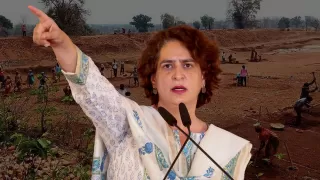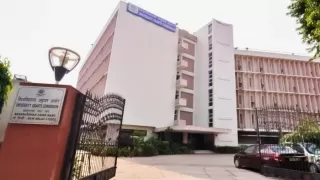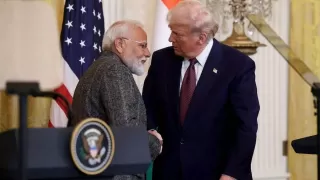India took a major leap in its innovation journey as Prime Minister Narendra Modi inaugurated the Emerging Science & Technology Innovation Conclave (ESTIC) 2025 at Bharat Mandapam, New Delhi. The grand event marked the launch of the ambitious Rs 1 lakh-crore Research, Development and Innovation (RDI) Scheme Fund, a visionary initiative aimed at boosting private sector participation in research and development. With this announcement, India’s commitment to fostering indigenous innovation and strengthening its scientific infrastructure took a defining turn, setting the stage for a new era in technological advancement.
Addressing a gathering of over 3,000 participants, including Nobel Laureates, eminent scientists, policymakers, industry leaders, and academicians, PM Modi underscored the importance of science and innovation as the pillars of the 21st-century economy. He noted that in an era of rapid global change, nations that lead in technology and research will determine the course of future progress. “This Rs 1 lakh crore is for you — to expand your capabilities, to open new opportunities, and to support high-risk, high-impact projects. Our goal is to empower India’s private sector to innovate boldly and compete globally,” the Prime Minister said.
The Prime Minister also announced the establishment of the Anusandhan Research Foundation, an autonomous institution that will strengthen research capabilities across universities and research centres. The foundation is expected to create a vibrant link between academia and industry, encouraging knowledge transfer and fostering next-generation innovation. “India is no longer just a consumer of technology; we are emerging as a global pioneer in innovation,” PM Modi remarked, highlighting India’s achievements such as developing indigenous vaccines during the COVID-19 pandemic and building the world’s most successful digital public infrastructure.
The Vision Behind ESTIC 2025
The Emerging Science & Technology Innovation Conclave (ESTIC) 2025 represents India’s commitment to becoming a global hub for science and technology. Organized at the iconic Bharat Mandapam, the event serves as a platform for global experts, researchers, and innovators to collaborate and shape the future of technology. The conclave aims to promote knowledge exchange and strategic partnerships that accelerate the country’s progress in frontier technologies such as quantum computing, artificial intelligence, sustainable energy, and advanced materials.
PM Modi emphasized that the conclave was conceived to meet the growing need for international cooperation in science and technology. “In the twenty-first century, there was a great need for experts from around the world to come together to brainstorm on emerging science, technology, and innovation, and to show direction together,” he said. The event symbolizes India’s readiness to lead global scientific dialogue and create transformative impact through innovation-led growth.
The Rs 1 Lakh-Crore RDI Scheme Fund
The newly launched Research, Development and Innovation (RDI) Scheme Fund is a bold move to catalyze investment in cutting-edge research. With a corpus of Rs 1 lakh crore, it seeks to fill the gap in funding for high-risk projects that hold potential for large-scale social and economic impact. Traditionally, such projects face challenges in securing financing due to uncertain returns. This fund, however, changes the paradigm by making capital available for transformative ideas and technologies that can define India’s next industrial revolution.
The RDI Fund will be available to startups, private companies, and research institutions working in areas of national importance. The initiative is expected to attract private investment, foster public-private partnerships, and create a robust ecosystem that supports experimentation and innovation. Experts believe that this fund could turn India into a global innovation powerhouse by 2030, aligning with the government’s vision of a self-reliant and technologically advanced nation.
Launch of the Anusandhan Research Foundation
To strengthen research infrastructure and coordination, the Prime Minister announced the creation of the Anusandhan Research Foundation. This institution will focus on integrating research efforts across universities, promoting interdisciplinary collaboration, and bridging the gap between academia and industry. The foundation will also play a key role in identifying emerging scientific trends and guiding policy development to enhance India’s research competitiveness globally.
According to PM Modi, the Anusandhan Foundation will act as a “bridge between knowledge and innovation,” helping India tap into its vast pool of scientific talent. It will also promote inclusive participation by supporting young researchers and providing them access to world-class facilities. The move is seen as a step toward transforming India into a global knowledge superpower.
India’s Expanding Role in Global Innovation
India’s success in science and technology has been increasingly recognized worldwide. The country has demonstrated remarkable achievements — from Chandrayaan-3’s successful lunar landing to the rapid development of indigenous COVID-19 vaccines. These milestones have established India as a nation capable of executing complex scientific missions at minimal cost while maintaining global standards of excellence.
During the ESTIC 2025 address, PM Modi referenced ISRO’s recent accomplishment: the successful launch of India’s heaviest communication satellite, GSAT-7R. “Yesterday, India also hoisted the flag in the world of science and technology. Our scientists continue to make us proud with their dedication and brilliance,” he said, congratulating the Indian Space Research Organisation (ISRO) team for their continued excellence in space exploration.
ESTIC 2025: Themes and Participation
ESTIC 2025 brings together over 3,000 participants from across the globe, including scientists, academicians, entrepreneurs, and policymakers. The three-day conclave is structured around 11 thematic areas of emerging importance:
- Advanced materials and manufacturing
- Artificial intelligence and digital transformation
- Bio-manufacturing and life sciences
- Blue economy and marine research
- Electronics and semiconductor manufacturing
- Emerging agricultural technologies
- Energy, environment, and climate sustainability
- Health and medical technologies
- Quantum science and computing
- Space technology and exploration
- Digital communications and networking
Each thematic session includes interactive discussions, expert panels, and collaborative brainstorming sessions aimed at identifying innovative solutions for India’s future. The conclave also serves as a platform for startups to showcase their innovations and connect with investors and policymakers.
India’s Path Toward an Innovation-Driven Future
With initiatives like ESTIC 2025, the RDI Fund, and the Anusandhan Research Foundation, India is setting a clear roadmap for its transformation into a global innovation leader. These initiatives aim not only to enhance technological capability but also to ensure that research outcomes benefit society at large. By focusing on emerging technologies and sustainable solutions, India is positioning itself as a country that innovates for global good.
PM Modi concluded his address with a vision of confidence and collaboration: “Our mission is to make India a hub of innovation, where ideas from every corner of the country find the strength and support they need to change the world.” The ESTIC 2025 conclave, with its emphasis on collaboration, research, and self-reliance, truly reflects India’s determination to lead the future of science and technology.
Also Read: ISRO Launches India’s Heaviest Satellite! LVM3-M5 Facts
























